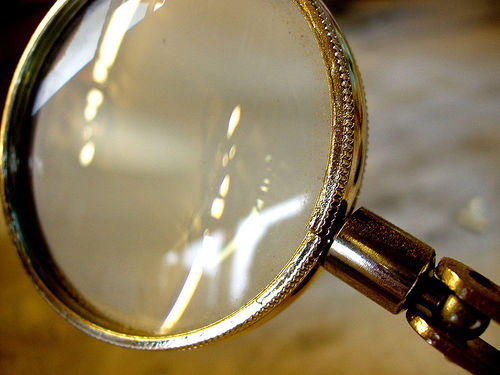Many of us who travel with our laptops, camera lenses, and other gadgets are often more worried about protecting them while traveling than breaking a leg. You might not be aware that your travel insurance probably isn’t covering your electronics – expensive companions in just about everyone’s bags these days. Theft and accidental damage to your gadgets are common threats you should consider insuring just as well as your ass…ets.

Typical Travel Insurance Coverage Isn’t Enough
Companies that specialize in travel insurance are generally good at covering your body parts and other accidents that can happen to your person but treat electronics as an afterthought. A monetary cap average of $750 is generally what you’ll find travel insurance companies will spring for – hardly enough if you’re traveling with a laptop and smart phone. It is also important to remember that insurance companies will need your receipts to properly reimburse you in case of theft. If you haven’t kept those receipts or have access to them, having a claim approved is nearly impossible.
Many times people assume that some part of their electronics and other expensive items are covered by travel insurance that may come with their credit cards. Coverage is almost always for your bags at a flat rate – not anything inside of them – so don’t rely on it if you don’t know for sure what protection you have.
 Where To Find The Best Coverage For Your Gadgets
Where To Find The Best Coverage For Your Gadgets
Unfortunately, insurance companies being the deliberately convoluted entities that they are, don’t make it easy to find out the extent of their coverage for things like stolen camera lenses or crashed hard drives. Almost always you’ll need to call the travel insurance company to flesh out the details – a process that applies if you’re traveling with a laptop, digital camera, iPod, Kindle, GPS – any or all of the above.
What I’ve found is the companies that provide the best coverage for electronics are those that don’t specifically focus on travel insurance, ironically enough. That’s not to say they’re not out there but larger general insurance entities’ personal property plans are a good place to focus your efforts. (Brooks On Break recommends State Farm’s single-item insurance for those of you from the US).
You might be wondering how much all of this insuring will cost you and with a huge “it depends” estimate around 5-10% of the total cost per item. Also, there are companies out there which specialize in insuring specific items – especially when it comes to photographic equipment – which might end up being less expensive. Either way, a phone call will give you concrete prices.
How To Prepare Your Search For Electronics Coverage
While reading the fine print is a good idea to formulate a general idea about a company’s coverage for electronics, it should not be your sole source of information once you narrow down the list to potential insurance providers. As I mentioned above, you’ll need to pick up a phone, use Skype, or swing by an office – but talking to a human being is essential.

Begin by listing each of your specific gadgets and breaking them down into individual parts if you have them. Camera lenses are a good one to note separately for example, as are chargers. (Remember, they’re not cheap either – especially if you’ve got a Mac.) Be as detailed as you can be and find the receipts for them – noting which ones you don’t have and adding up the total cost.
- If you don’t have the receipt for something, check if you’ve registered the item with the company for a limited warranty. It’s usually a good way to get a copy or your email inbox might have a sales receipt buried away in there as well.
 Now you’ve got a good foundation of information to provide the insurance company if and when they ask you about the electronics you’ll be insuring. Before you make a decision however, get as many details as you can from the agent. Be sure to note the employee’s name and identification number if they have one for some insurance of your own.
Now you’ve got a good foundation of information to provide the insurance company if and when they ask you about the electronics you’ll be insuring. Before you make a decision however, get as many details as you can from the agent. Be sure to note the employee’s name and identification number if they have one for some insurance of your own.
Although you should tailor your questions to your specific travel situation and gadgets, some good questions to focus around are:
- What exactly is covered and what components constitute my property? (For instance, is a failed hard drive covered if my laptop is? What about chargers? That’s the general idea anyway.)
- How do I file a claim and what proof (e.g. receipts) is required for each item?
- How is value assessed for each item – am I reimbursed what I paid for each item or some other value?
Don’t forget to mention to the company when you’ll be traveling and find out if there are any clauses for the places you’ll be visiting.
Ask Yourself If That 5 Year Old Laptop Or That’s So 2004 Needs To Be Insured
Electronics are a lot like cars except they depreciate even faster. They also tend not to last as long as automobiles, particularly when they’re bouncing their merry little way around the world in your backpack. It’s infinitely more expensive in some cases to insure a netbook that’s so old that insuring it ends up being more than the cost of the item itself. (Beside you’ve been dying for an upgrade.) Don’t just insure all of your electronics because you feel that’s what you have to do. Exercise a little cost-benefit analysis before cracking open your wallet to decide whether or not you should get travel insurance in the first place.
Finally, remember that your data won’t be covered by any company and in digital terms it’s much more valuable than the equipment itself. Don’t make the mistake of not backing up your data (or photos) and lock down your gadgets in case they do get nicked by some unscrupulous types so you can insure what no company will.
[magnifying glass photo by Auntie P, girl in red by oli.G, DSLR by Photo Extremist]












great post! covering my electronics is something I haven’t really been thinking about so thank you :)) (especially since I tend to drop them a lot under “normal conditions” – my friends will probably take bets on how long my camera will survive once I hit the road)
And cameras are those gadgets that need to be out and about more than others – a good one to insure!
Great post, Anil. After reading the fine print in a zillion policies, and realizing most companies have limited coverage on electronics, which are the only things I really care about insuring, I opted out of traditional travel insurance. Instead, I confirmed with my U.S. health insurance carrier that I would be covered while overseas (although I would have to pay up front and be reimbursed) when I returned. The only thing they did not cover was medical evacuation in the event I was seriously injured, and evacuation can apparently cost up to $25K, so I just bought a med evac policy.
Thank you very much Barbara. I too have found overall that more traditional insurance companies provide better coverage across the board – health and electronics. A bit more cumbersome to find though but a large market someone is missing out on.
Funny you should post this as I just called my insurance company last week to see if my laptop would be covered under my homeowners insurance. It is but only for theft or vandalism and it is subject to the deductible I have set on the policy. I could add an endorsement that would cover electronics including damage I caused (dropping, spilling wine on it, etc). The deductible was cut in half and for $3,000 additional coverage it was only an additional $6.40 a year. To cover my camera, I could add to my personal property policy I have and this would cover for theft and damage by me.
My advice, call your insurance agent! I learned so much 🙂
Absolutely agree – calling the agents themselves is the best way to get the information you’re looking for (or bumping into what you didn’t know about). Plus it’s much easier than reading *all* of the fine print that doesn’t always finely define everything that could happen 😉
Great information! What do you use personally Anil? Anyone else care to share the companies they use? I’m looking to add coverage on my own gadgets.
The coverage I use is very patchwork depending on where I’m traveling and how long I’ll be staying in a given place. What’s worked quite well for me is opening up a business credit card (good for frequent flyer miles as well) and getting the added personal property coverage it provides.
Very useful post, thanks for the info. I looked into this a while back but decided against gadget inurance as my gear is either second hand, 5 years old or only worth £100. Most of the time the excess on the insurance is about £100 and I’d be better of buying a new camera than going through the hassel of claiming on insurance.
My pleasure and good point about the cost of the insurance vs. the cost of the electronics themselves. Gadget depreciate at an incredible rate – the smaller the item, the faster the fall.